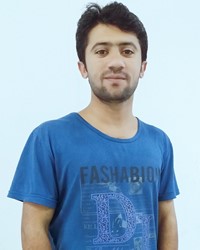Baloch Chandia in Pakistan

Photo Source:
Anonymous
|

Map Source:
People Group data: Omid. Map geography: UNESCO / GMI. Map Design: Joshua Project
|
| People Name: | Baloch Chandia |
| Country: | Pakistan |
| 10/40 Window: | Yes |
| Population: | 158,000 |
| World Population: | 158,000 |
| Primary Language: | Balochi, Eastern |
| Primary Religion: | Islam |
| Christian Adherents: | 0.02 % |
| Evangelicals: | 0.02 % |
| Scripture: | New Testament |
| Ministry Resources: | Yes |
| Jesus Film: | Yes |
| Audio Recordings: | Yes |
| People Cluster: | Baloch |
| Affinity Bloc: | South Asian Peoples |
| Progress Level: |
|
Introduction / History
The Baloch people live in the southernmost region of the Iranian plateau in Pakistan, Iran, and Afghanistan. They speak the Balochi language. It is believed that the name "Baloch" is derived from the name of the Babylonian king and god Belus. Some believe the word is a derivation of Sanskrit words "Bal" meaning strength and "Och" meaning high or magnificent.
The Baloch claim their origins to be in Aleppo in what is now Syria. They are descendants of Hazrat Ameer Hamza, the uncle of Islamic prophet Muhammad. Based on an analysis of the linguistic connections of the Balochi language, the original homeland of the Balochi tribes was likely the east or southeast area of the central Caspian region.
There are many Baloch subtribes such as the Chandia Baloch. The Chandia Baloch generally live in remote mountainous and desert regions, which provides protection from invasions. They live mainly in the Balochistan region of the southeastern-most edge of the Iranian plateau in Pakistan, Iran and Afghanistan, as well as in the Arabian Peninsula.
What Are Their Lives Like?
The Chandia Baloch live according to tribal customs. They are separated into a number of different subtribes, including the Bugti, Marri, Zehri, Hooth, and Megal. Chandia Baloch men wear long shirts with long sleeves and loose pants. They sometimes wear turbans on their heads. The Baloch living in Iran observe a more conservative dress code; some women cover their faces with thick red wools and wear a head scarf and long veil.
Gold ornaments such as necklaces and bracelets are an important aspect of Chandia Baloch women's traditions. They usually wear a gold brooch that is used to fasten two parts of the dress together over the chest. They pass traditions to children through oral history retelling. The tradition of a Chandia Baloch mother singing lullabies to her children has played an important role in the transfer of knowledge from generation to generation for many centuries.
What Are Their Beliefs?
The Chandia Baloch are predominantly Sunni Muslims but some are Shia Muslim. Balochi customs and traditions are conducted according to codes imposed by their tribal laws.
Prayer Points
Pray for God to do whatever it takes to open the door to the gospel among the Chandia Baloch.
Pray that the Chandia Baloch may be open to the message of the gospel.
Pray that God will provide workers who speak the Balochi language to work with the Baloch peoples.